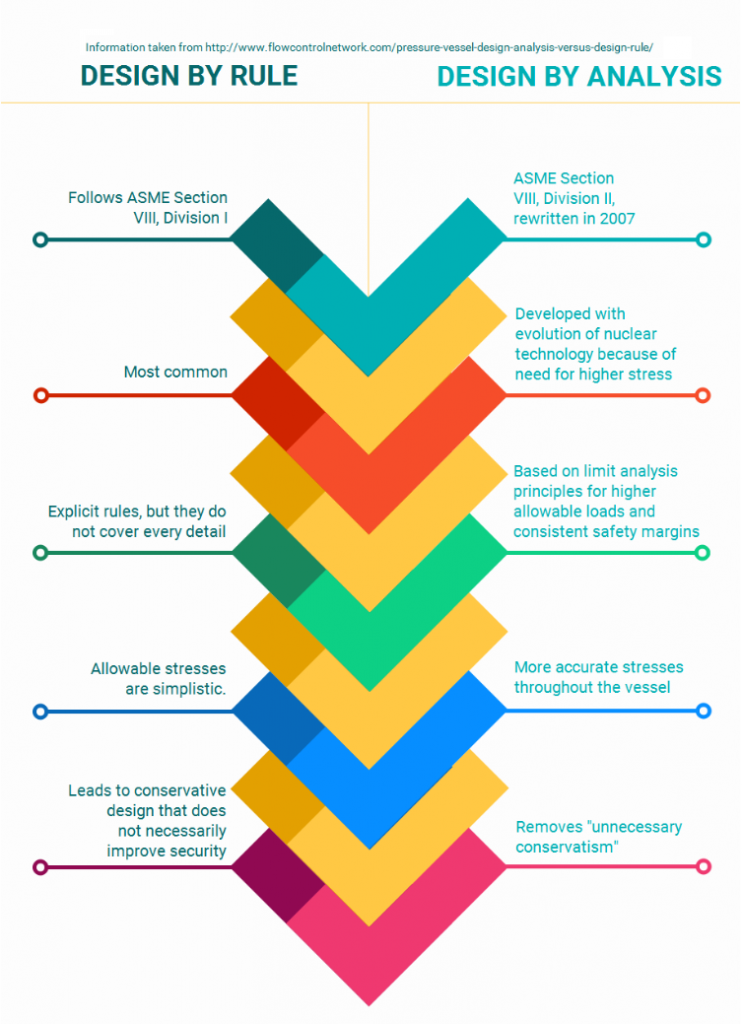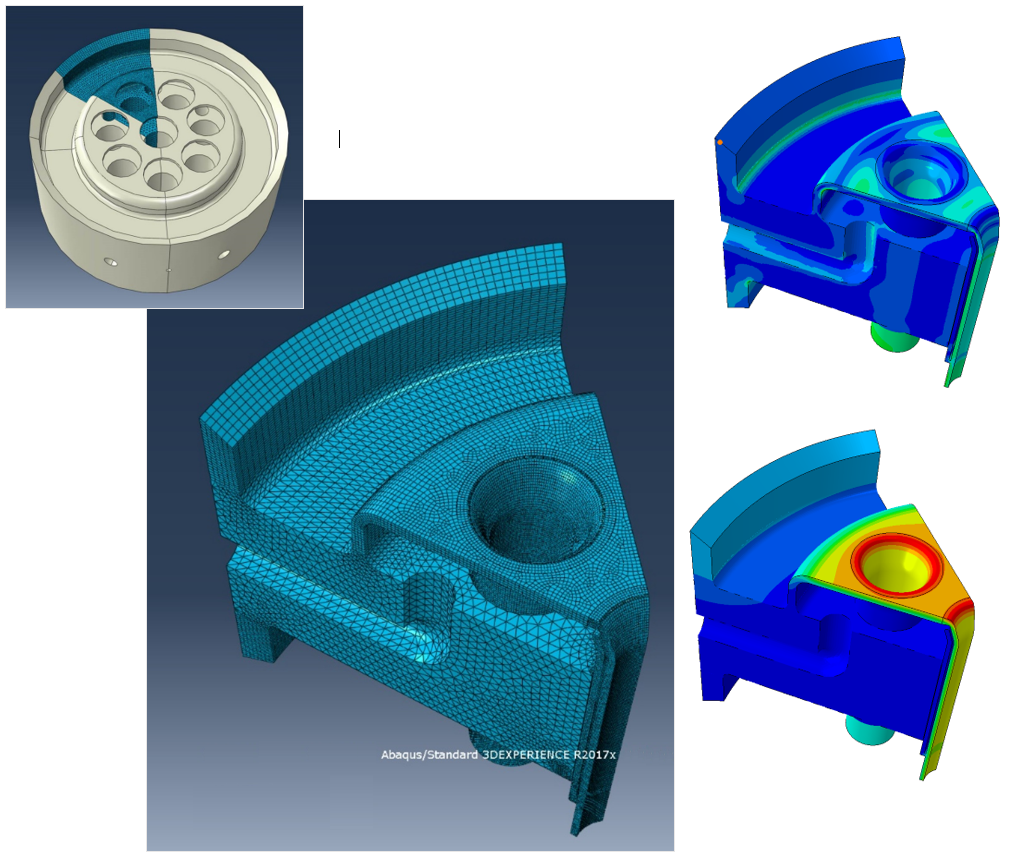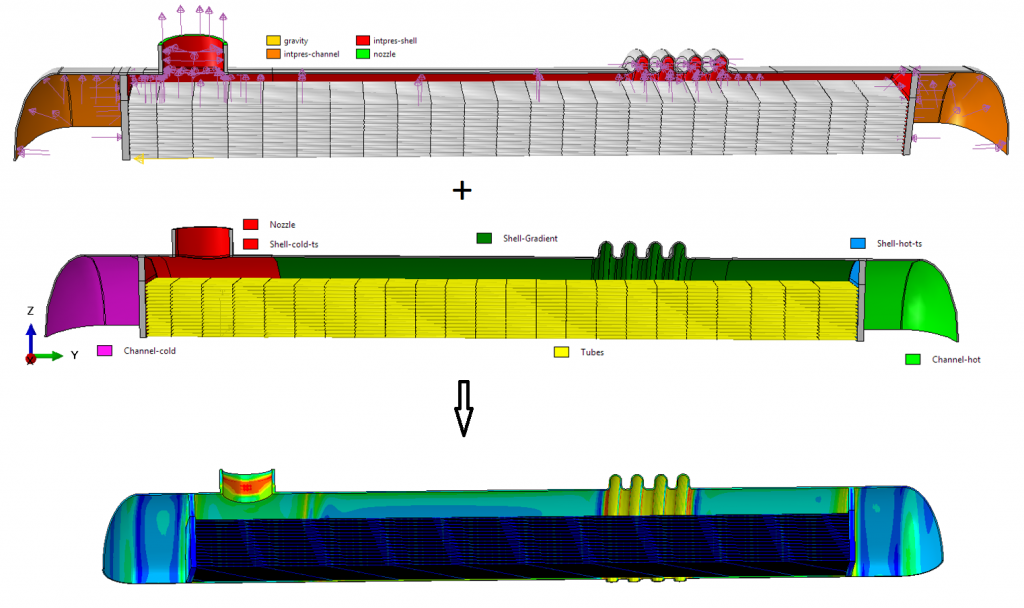Design by Analysis complements or replaces design by rule based pressurised equipment design.
It is nowadays common practice and fully accepted in most pressure equipment design standards.
Compared to Design By Rule, which can generally be performed using much simpler computer programs, Design By Analysis requires more specialised knowledge and experience working with sophisticated computational/numerical models.

part 4 (Design by Rule) and part 5 (Design by Analysis.
Design by Analysis can be done on components that are not covered by the design by rule part due to their geometry or loading. Or because a design by rule design would not result in a competitive or robust design. For pressure vessel design a section on design by analysis is included in the most commonly used pressure vessel design codes, ie. ASME VIII div 2 part 5, AD2000 S4, EN-13445-3 Annex B & C, Stoomwezen (RTOD) D 1200, PD5500 Annex A.

Design by Analysis provides rules on using numerical analysis (typically finite element analysis) to design pressure equipment. There are rules to explicitly demonstrate Protection Against known failure modes, ie. Plastic Collapse, Local Failure, Collapse From Buckling and Cyclic Service (Ratcheting and Fatigue).

